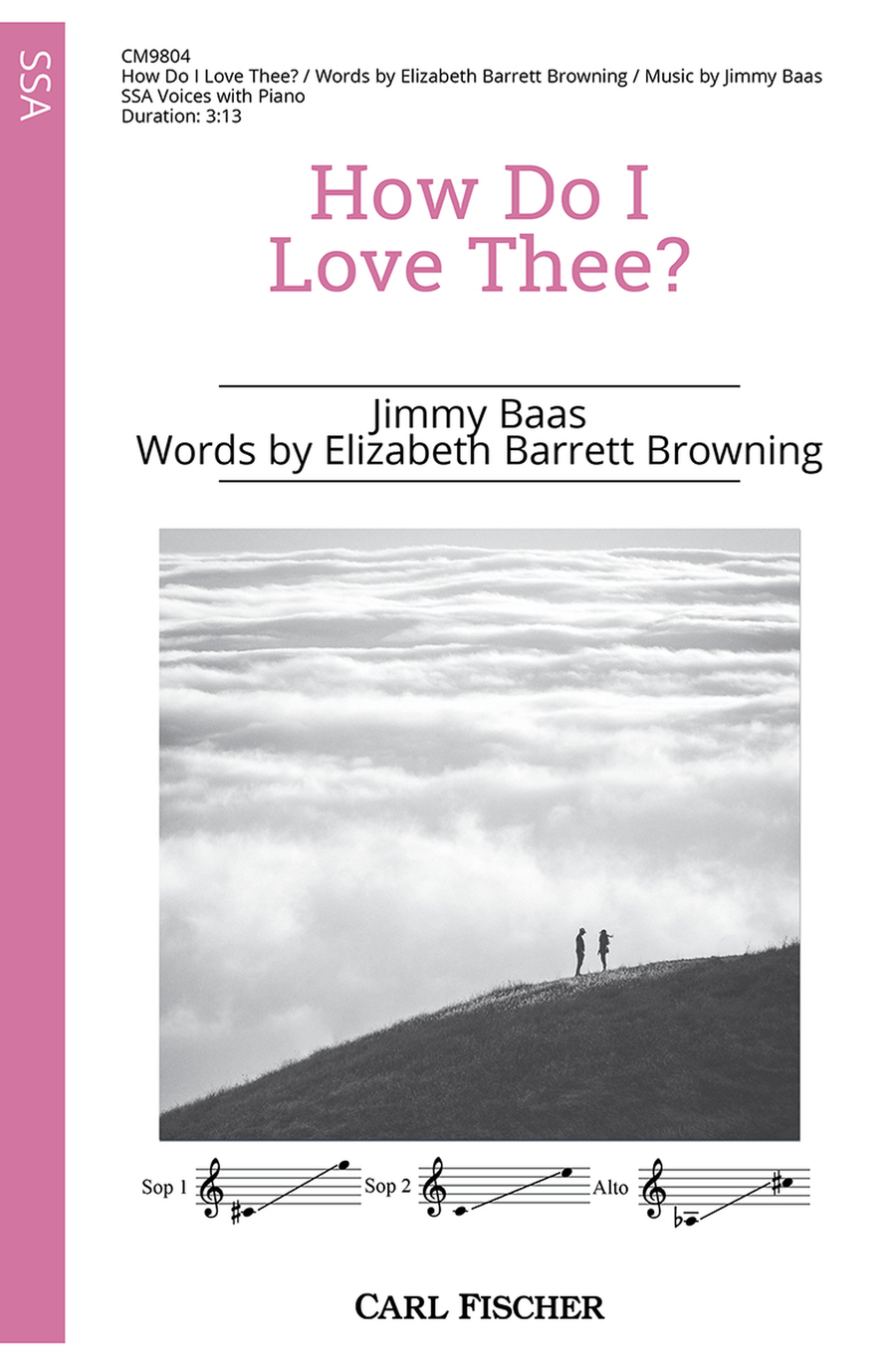Choral SSA Choir and Piano
SKU: CF.CM9804
Composed by Jimmy Baas. Octavo. Performance Score. Carl Fischer Music #CM9804. Published by Carl Fischer Music (CF.CM9804).
ISBN 9781491168547. UPC: 798408100483. Key: D major. English.
How Do I Love Thee? by Jimmy Baas, for SSA women’s chorus and piano, beautifully sets Elizabeth Barrett Browning’s iconic poem to music. The piece begins with simple unison lines that blossom into lush two- and three-part harmonies, enriched by a thoughtfully crafted piano accompaniment. Shifting from a gentle 3/4 to a flowing 9/8, the composition mirrors the passion and depth of the text, blending exquisite melodies, countermelodies, and rhythmic variety to reflect the enduring and transcendent nature of love.
This newly composed work, titled “How Do I Love Thee?” by Jimmy Baas, is designed for an SSA women’s chorus accompanied by piano. The title and initial line features one of the most renowned and cherished phrases: “How do I love thee? Let me count the ways.” In her poem, Elizabeth Barrett Browning employs various abstract analogies to articulate the depth of her affection for her beloved. Her love is characterized as pure, liberated, and fervent. Ultimately, she asserts the immortality of her love, suggesting that it transcends even death: “If God choose, I shall love thee better after death.”The thoughtfully crafted piano accompaniment enhances the exquisite melodies and harmonies that are intricately woven throughout the composition. The voices commence in unison but swiftly evolve into two-part and three-part harmonies. Numerous countermelodies and polyphonic lines complement the main melody. Regarding rhythm, the piece begins with a gentle 3/4 time signature, which transitions to a 9/8 feel in the middle, incorporating triplets, duples, and dotted quarter notes. An interlude returns the piece to 3/4 time, building in intensity to reflect the vivid and passionate imagery presented in Browning's text.



